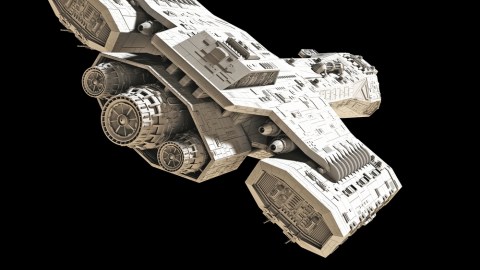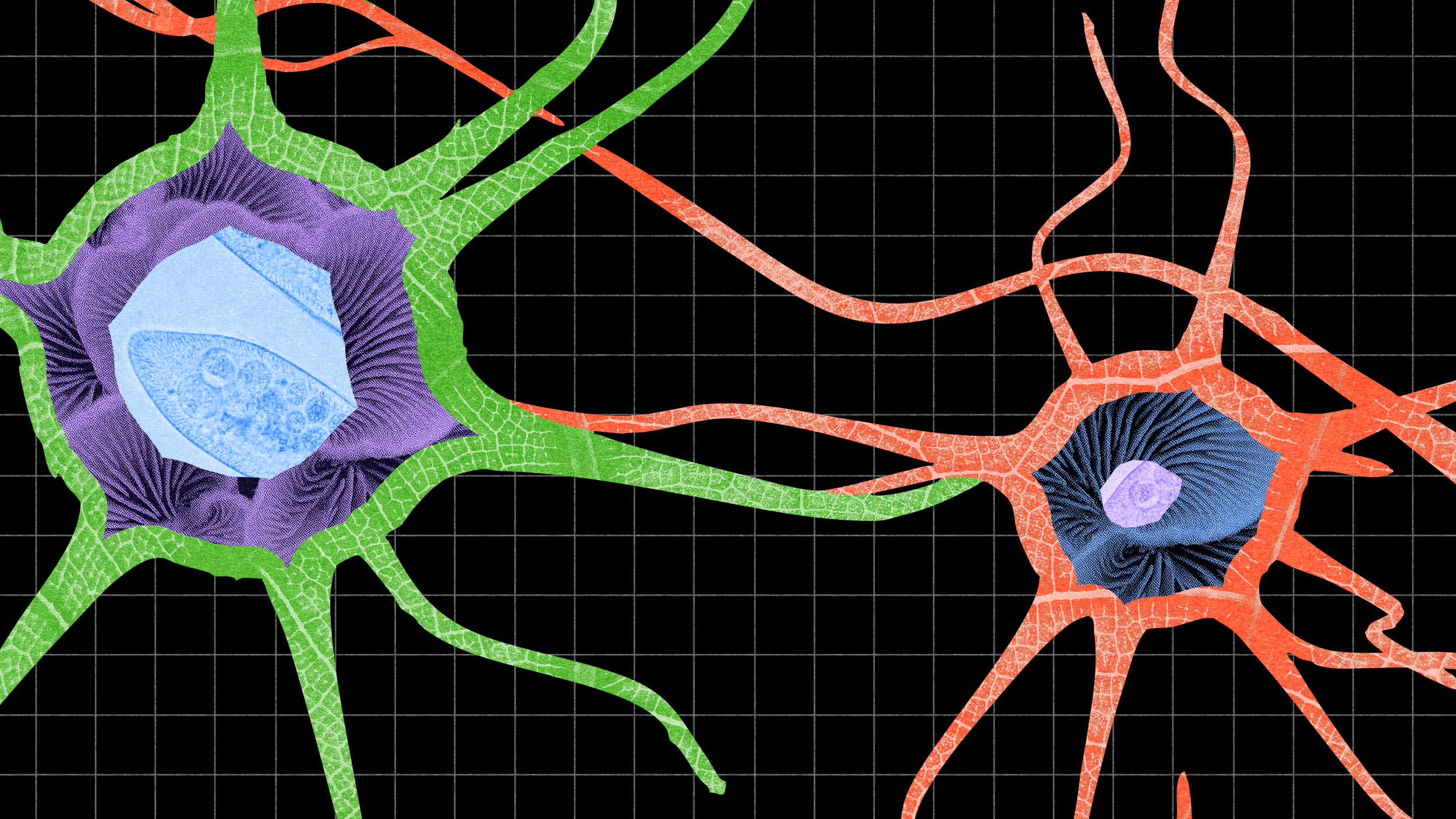Experimental Closed System Propulsion Engines For Spaceships

Masud Harouny was born in Kabul, Afghanistan, moved to India as a toddler, and to the US when he was six. He attended Cal Poly Pomona and studied mathematics and physics. While he gave up on college he never gave up on his intellectual pursuits.
Today he is trying to raise $10,000 to build a prototype for a closed system propulsion spaceship engine. I found him when he teased me about contributing to the famous potato salad Kickstarter campaign.
How did you get interested in all this?
I got interested in science from watching Spider-Man. In the 90s the Spider-Man animated series was jam packed with science. Of course most of it was fiction or hypothetical, but I was captivated by the science elements.
I got interested in space propulsion in high school when I took my first physics course. They gave us this scenario of an ice skater on frictionless ice. We were asked to come up with ways to make the skater move. The point was that we wouldn’t be able to because of Newton’s Third Law. That problem stuck with me for years.
What is the current problem with spaceship engines?
The “current” problem has always been and always will be Newton’s Third Law of Motion. The law states that for every action there is an equal and opposite reaction. If I push or pull a thing, it will push or pull (respectively) back on me with the same force in the opposite direction.
On earth we use this law in many ways. We use the ground to push off of, and propel ourselves on land. We use the water to push off of, and propel ourselves in the oceans and rivers. We use the air to push off of, and propel ourselves through the sky. We have become masters of all three because earth is full of air, water, and (for lack of a better word) earth.
There is nothing in space to push off of, it’s empty. If I am enclosed in a container and drifting in space, whichever end I push on will push back in the opposite direction. The container gets pushed equally on opposite sides, and doesn’t get propelled. Rockets, unlike a closed container, are open at one end. When you ignite the fuel inside of a rocket, the fuel expands (like a stomach bloating) and pushes the rocket in all directions. We prevent the force at the top end (the expanding fuel) from being negated at the bottom by allowing the fuel to escape propelling the rocket upwards. With the rocket, we are essentially doing the same thing we did with the earth examples, we’re pushing off of something.
The only difference is that a rocket has to carry the thing that it’s pushing off of. This one aspect makes it very inefficient and cumbersome. People have long been looking for alternatives.
I never thought of rockets as inefficient before, but then, I never considered Newton’s Third Law of Motion a problem. Okay, so Newton’s rockets are crap… what’s a better way?
The alternatives have historically been referred to as “reactionless drives”. Most of these devices are nonfunctional because their creators have ignored Newton’s Third Law, and, not to throw stones, but they also didn’t have much knowledge of physics or mathematics.
The one that does work (aside from mine), at least on paper, employes an aspect of quantum mechanics into its design. You’ve probably heard of its creator, an Egyptian college student named Aisha Mustafa. Her device is designed in an enclosed casing (scientifically referred to as a closed system). However, she uses a very simple quantum mechanics trick to get around Newton’s Third Law, and push one end harder than the opposite end, thus creating propulsion.
The problem with her device is that, although one end does get pushed harder than the other, the magnitude of the force is extremely small. It would take a very very long time to accelerate it to a point where you would actually notice the device move. Despite this little hangup, she was on the right track. For a closed system, you have to push one end harder than the other.
So then you might ask, how is this better than a rocket? It’s simple! These machines are electrical. With electrical devices, we can use batteries, solar energy, nuclear reactors, fusion reactors, hamsters, etc… It’s like comparing a Prius to a gas guzzling station wagon.
When did you get back into looking at propulsion?
I started to ponder about propulsion again four years ago and became obsessed with getting around Newton’s Third Law. I would come up with ideas and send them to people to be evaluated. When the critiques came back I adjusted my ideas or used them to help create new ones.
I have a philosophy about being wrong, and that is I am right until I understand WHY I am wrong. I have strained my brain for the past few months coming up with this new propulsion system, and have been getting amazing feedback on it. Now, I am pounding the pavement trying to get some research going for it, and here we are, today.
And part of pounding the pavement was raising money from Kickstarter?
After being told that it could work from so many people, I was still unable to get any kind of research funding for it. I was very frustrated and a little angry. I decided to take matters into my own hands. I know the guys at a machine shop that built prototypes back in San Dimas (my old city), and so I thought I could delegate the actual building to them.
One day I was looking at Facebook and I saw Zach Braff talking about his new film, Wish I Was Here. I remembered that he got funding for it from Kickstarter, and so had Veronica Mars.
So I thought I’d try Kickstarter. The first time I applied I got rejected. I thought it was because they only did funding for startup businesses, but after seeing that potato salad got funded I was a little confused.
I did some research and apparently they take the rewards very seriously. I had something like give a million dollars get a free t-shirt. The other problem was I don’t think they knew that it was an experiment. So I started a new campaign with a new name (only slightly different, including the word experiment), a modest description (that emphasized it was only an experiment), and added serious rewards. I got the green light a few days later.
If you had $10,000 for this project how would you spend it?
It will all go into making the prototype. The machine shop in San Dimas is Double D Precision Inc. These guys get paid for making parts and providing expert input on projects for both USAF and NASA. Their business is largely based on prototyping. The money will go towards their services and materials. I am not a machinist, but I will oversee the entire process. Once the prototype has been made, I’ll test it and post the results on YouTube.
What can you tell me about the prototype?
The purpose of this test will be to see if this closed system machine can move by producing a propellent force in one direction. All I need to do is test it horizontally. A horizontal propulsion test has to be done with balance and without outside forces. It has to be on a flat surface and it can’t use the air or friction of the ground. Therefore the entire machine will be enclosed and tested on a flat and slippery surface. Getting it to work vertically would require a lot more trial and error, and that would cost a lot more money, maybe in the millions.
The machine will most likely be made out of an aluminum alloy or a very tough polyurethane because neither has very strong magnetic properties. Something like iron, which is highly magnetic, would mess up the desired effects. It’s not going to be very big (about 1.95 cubic feet).
Okay, so what’s next? How do you move this project forward?
Now that I know a few professionals believe this might actually work, I am very committed.
I am focusing on getting an animation video for Kickstarter. If the Kickstarter fails, I’ll relaunch it. If it fails again, I am not sure, but I am not going to give up on it. This stuff is my passion. It’s what drives me.
Read more about the physics and mathematics of Masud Harouny’s Spaceship Engine Experiment on his website and follow him on Twitter at @mugugipan.
Image credit: Algol/Shutterstock





